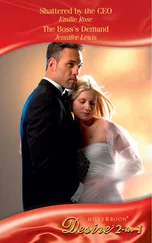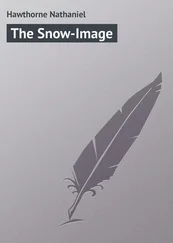“I’d like to go talk to him, if you don’t mind. You know, when people find out that I’m the one who sculpted their friend’s or family member’s face, they sometimes open up.”
Mike sighed. My son had issues with me “interfering” in his cases, but I had issues with leaving my sculptures alone-both before and after they reacquired their identities. I had already become involved with Addie Russell Waldrep before I knew that’s who she was. I had held her skull. I knew every square millimeter of her face. She and I had made a connection across the expanse of time-we had a kind of spiritual friendship. I wanted to help find who killed her. I had to find who killed her.
“I don’t mind,” Tommy said, “for the usual deal.”
“I tell you everything I find out.”
“Yep-and we’re still going to see him again later anyway, whether you go or not. It’s our job, you know.”
“I understand, Tommy. You know I understand.”
He nodded. “Go talk to him, then. I’ll give you the phone number and address.”
Mike sighed again, and Tommy shook his head and smiled.
“Hey, Toni, take Leo with you-Okay?”
“Not in her uniform. He won’t talk to me.”
“I didn’t say she had to be in uniform. Just take her, and tell her I said to wear that ankle holster I gave her.”
I sighed, “Right.”
“Tommy’s rules, Mario.”
“I heard, son.”
My Black Beauty rumbled to a stop in front of a dinky frame house in one of the old Central/West Austin neighborhoods. There were rows of small one-story houses on narrow little lots. Built in the late 1940s and early 1950s for the postwar set, it was affordable middle-class housing for mostly blue-collar folk…pretty stylish then, but out-of-date now and way overpriced. The houses were pretty lightweight stuff compared to the new construction in Austin, but people lived in these neighborhoods for the convenience and the atmosphere of Central/West Austin.
Jimmy’s house was chartreuse with brown and magenta trim and a tin roof-and that was the refurbished look. The yard was marginal-a combination of Bermuda grass and weeds with patches of hard, dry dirt. The shrubs that went across the front of the house were patchy-one green and looking fairly healthy, but shaggy, next to another that looked more like tumbleweed. There was a gravel driveway that led to the carport, where his 1968 Ford pickup truck was parked. It was dark green, with patches of primer and brown paint. There was a bumper sticker on the back with the symbol of the POWs/MIAs and the slogan Lest We Forget, and the back windshield bore the emblem of the United States Marines, next to which was another bumper sticker that simply read, Semper Fi.
“Interesting color scheme,” Leo said.
“At least the door is brown,” I said as I knocked on the door frame.
Jimmy Hughes came to the door wearing an undershirt and faded, torn blue jeans-there were no shoes on his feet. A chocolate-brown Lab stood by his side. He stared at us from behind the screen door. He was about six feet tall, slim, with a narrow face and square chin. He had piercing light blue eyes and long dark eyelashes. His gray hair was thin on top with a receding hairline, but it was long in back and pulled into a ponytail held by a green rubber band. The most noticeable thing about Jimmy’s appearance was a long scar that ran down the left cheek, and burn wounds on either cheek and near his left eye.
“Jimmy Hughes?”
“Yeah,” he said suspiciously.
“My name is Toni, and I’m the artist who sculpted the face of Addie Russell that you saw on the news.”
“Oh yeah?” His face brightened just a bit.
“Would you mind if we came in and talked just awhile? I’d like to know more about her.”
He looked at Leo and squinted.
“This is my friend, Leo.”
“Y’all work for the cops?”
“No,” I said.
It was true. Neither Leo nor I were employed by the police. I was a freelance artist who contracted with anyone who requested my services, and Leo was employed by the AFD, although technically she was a law enforcement officer. He looked us both over carefully and then motioned us in.
“It ain’t fancy, nor even neat,” he said as we entered.
There were books and magazines scattered about on the floor and on any even surface in the room-coffee table, end table, bookshelf-you name it. An old recliner sat on one end of the living room, right across from a small TV. The recliner was upholstered in a tacky plaid and it had a large hole in the fabric on one arm. There was a guitar leaning up against the wall next to the recliner. Jimmy motioned us to the sofa, which was also worn, but was one of the only places in the room not covered with books and magazines.
Nodding toward the guitar I said, “You play?”
“Yes ma’am,” he said, “I play a couple of gigs a week with some guys. We play rhythm and blues.”
“My husband and I used to listen to that kind of music. There was a man in my husband’s unit in Vietnam who used to play guitar for us in the evenings. That is, when we weren’t on duty or under mortar fire.”
He turned his head and leaned toward me on the edge of his chair. “You were in ’Nam?”
I nodded. “U.S. Air Force. I was a nurse in Da Nang. My husband and I met over there.”
He relaxed almost instantly.
“I was in the marines. I was in Da Nang for a while, too.”
“We had a lot of friends who were marines,” I said. “When were you there?”
“I was ‘in country’ 1968 to 1970. I was in Da Nang toward the end of 1968 and some of 1969.”
“We were already gone by then,” I said.
He nodded. We sat quietly for a few seconds.
“Is that how you make your living, Jimmy-playing the guitar?”
“Well, it’s one way. I do some writing for the Freedom Journal.”
“Yes, I’ve heard of that paper.”
It was a strange paper that had an occasional good article, but most of their pieces were pretty much all over the map.
“It doesn’t pay much, but I get a little bit per article. Then I also work down at the canoe and paddleboat rental place on Barton Creek.”
“I know that place,” Leo said. “So, are you a boater yourself?”
“I like to go out on the water, paddle up and down Town Lake and just think sometimes. It’s quiet out there and sometimes I just need that kind of quiet.”
“I can relate to that,” I said.
I looked at Leo and caught her eye. Leo and I looked at each other, and I knew she was thinking what I was about the canoeing. Then I glanced down and saw a pair of hiking boots on the floor near his chair. They had red clay caked up all around the soles. I recognized that thick red clay-it was the same red clay I had on my boots from Red Bud Isle that morning we dug up Addie Waldrep’s bones. It could be a coincidence, but I still wondered about it.
“So, Jimmy, would you mind telling me about Addie-how you knew her?”
“What’s your interest?”
“I reconstructed her face and I guess I got a little attached to her.”
The expression on his face was strange in response to my words-I couldn’t tell if it was sorrow or nervousness. He cleared his throat and shifted in his seat. “Well, uh, we grew up together in this little-bitty town. You probably never heard of it-Viola?”
“Actually, I have heard of it. It’s up near Giddings, right?”
“Uh, yeah, that’s right. Well, Addie was about four years younger than me, but I knew her since she was born. Her family lived just down the road from mine, and we went to the same school.”
“Was she an only child?”
“No. She had a brother. I think he lives in Houston now.”
“Do you have any brothers or sisters?”
Читать дальше
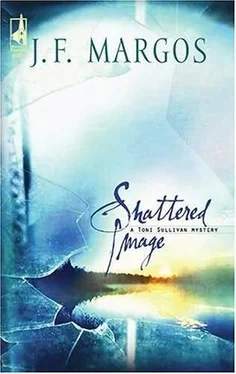
![Никки Сикс - Героиновые дневники. Год из жизни павшей рок-звезды[The Heroin Diaries - A Year in the Life of a Shattered Rock Star]](/books/78612/nikki-siks-geroinovye-dnevniki-god-iz-zhizni-pavshej-rok-zvezdy-the-heroin-diaries-a-yea-thumb.webp)
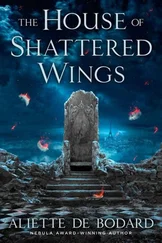
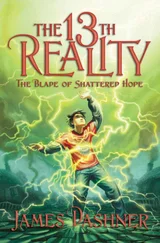
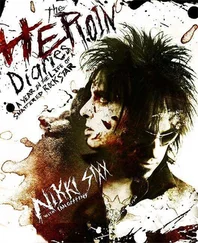

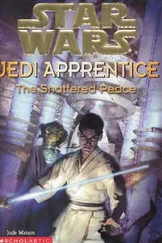

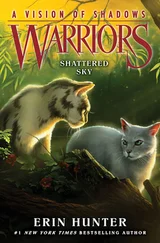
![Ширли Мерфи - The Shattered Stone [calibre]](/books/436059/shirli-merfi-the-shattered-stone-calibre-thumb.webp)
